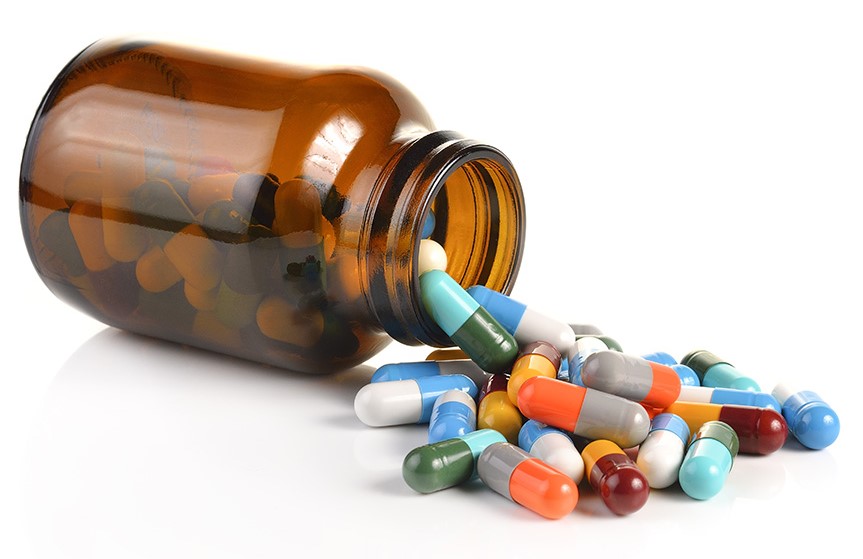The Federal State Budgetary Institution "VGNKI" has developed a method for determining the mass fraction of quinolones in livestock products

The goal of this work was to optimize chromatographic conditions and mass spectrometric detection parameters, as well as methods for preparing samples for analysis.
Today, this technique makes it possible to determine the desired compounds in the concentration range from 1 to 1000 μg/kg for quinolones and from 1 to 2000 μg/kg for difloxacin and flumequin in by-products. In addition, the list of analyzed substances was expanded to emergent (relatively recently appeared) analytes, such as nadifloxacin, gatifloxacin, cinoxacin, sparfloxacin , orbifloxacin, fleroxacin, gemifloxacin, pazufloxacin, enoxacin , grepafloxacin, which in the future will make it possible to quickly monitor the presence of drugs in livestock products based on connection data.
Quinolones, especially fluorinated ones, are one of the most important broad-spectrum antibacterial drugs in veterinary medicine. Most often, quinolones are used to treat diseases of the urinary, respiratory and digestive systems of farm animals (cattle, small livestock, poultry and others) caused by pathogenic microbes.
Inappropriate use of antibiotics for the prevention and treatment of diseases of farm animals, as a rule, leads to their contamination of livestock products, which, in turn, can have a negative impact on human HEALTH . Among such influences, one can highlight skin allergic phenomena, imbalance of intestinal microbiota, arthrotoxic effects, and increased resistance of pathogenic microorganisms to the drugs used.
It is precisely because of the risk of resistance to antimicrobial drugs, as well as a large number of side effects from their use in RUSSIA and other countries, that regulatory restrictions on the content of various fluoroquinolones and quinolones have been introduced on the territory of the Russian Federation, and maximum permissible levels (MAL) of residues have been established. of these antibiotics in food.
As a result of the research, methodological guidelines were developed and metrological certification of the methodology was carried out. In 2024, the methodology will be included in the scope of accreditation and introduced into the activities of the Testing Center of the Federal State Budgetary Institution "VGNKI".
Read together with it:
- Pharmaceutical companies see a threat to EU security due to bacteria in UkraineAntibiotic-resistant superbugs have been detected in Ukrainian soldiers since the beginning of the conflict, and now they pose a threat to Europe, according to a foundation developing antibiotics.The Ukrainian conflict threatens Europe with antibiotic-resistant "superbugs," said Henry Skinner, CEO of the AMR Action Fund, which specializes in investing in antimicrobials. His article was published o...
- Stress in livestock: How housing conditions affect their health and productivityFor example, early separation of calves from their mothers causes a sharp surge in cortisol, which weakens the immune system and increases vulnerability to disease. The article also emphasizes that improper milking and housing practices can cause chronic stress and reduced productivity. Furthermore, the problem of lameness in cows is considered a consequence of living conditions, which can be impr...
- Роспотребнадзор подводит итоги контроля мясной продукции в Тамбовской области за 2025 годПоложительные аспекты: Не было выявлено нарушений санитарно-химических показателей, присутствия патогенных микроорганизмов, ГМО, паразитов, антибиотиков и радиационного загрязнения. Проблемные моменты: Отмечается ухудшение по физико-химическим показателям — 5,88% образцов не соответствует стандартам, по сравнению с 1,5% в 2......
- New BoviRes-RSVI vaccine for early immunization of calves: A breakthrough in veterinary scienceOne of the vaccine's key advantages is its optimized immunization schedule. Research confirms that colostral antibody levels in calves begin to decline as early as 21 days after birth. Traditional vaccination schedules do not always ensure rapid development of post-vaccination antibodies, increasing the risk of disease during this critical period. Alexander Kononov, HEAD of the Biotechnology Labor...
- A Call for Détente, an African Strategy, the Village of the Future, and the Lithuanian Scam: A Summary of the President's WeekALEXANDER LUKASHENKO at a meeting on developing cooperation with African countries Alexander Lukashenko at the III MINSK International Conference on Eurasian Security Alexander Lukashenko during a working trip to the Vitebsk region and a visit to the Berezina Biosphere Reserve Alexander Lukashenko at a meeting on developing cooperation with African countries Alexander Lukashenko at the III Minsk I...
- Американская ассоциация производителей свинины призывает FDA пересмотреть маркировку «ультраобработанная» до введения рекомендаций по питаниюВ то время как Управление по санитарному надзору за качеством пищевых продуктов и медикаментов (FDA) готовит официальное определение «ультраобработанных продуктов» в преддверии введения новых рекомендаций по питанию для американцев, Национальный совет производителей свинины (NPPC) призывает агентство придерживаться более сбалансированного, научно обоснованного подхода, ориентированного на пищевую ...




























































